Dinner
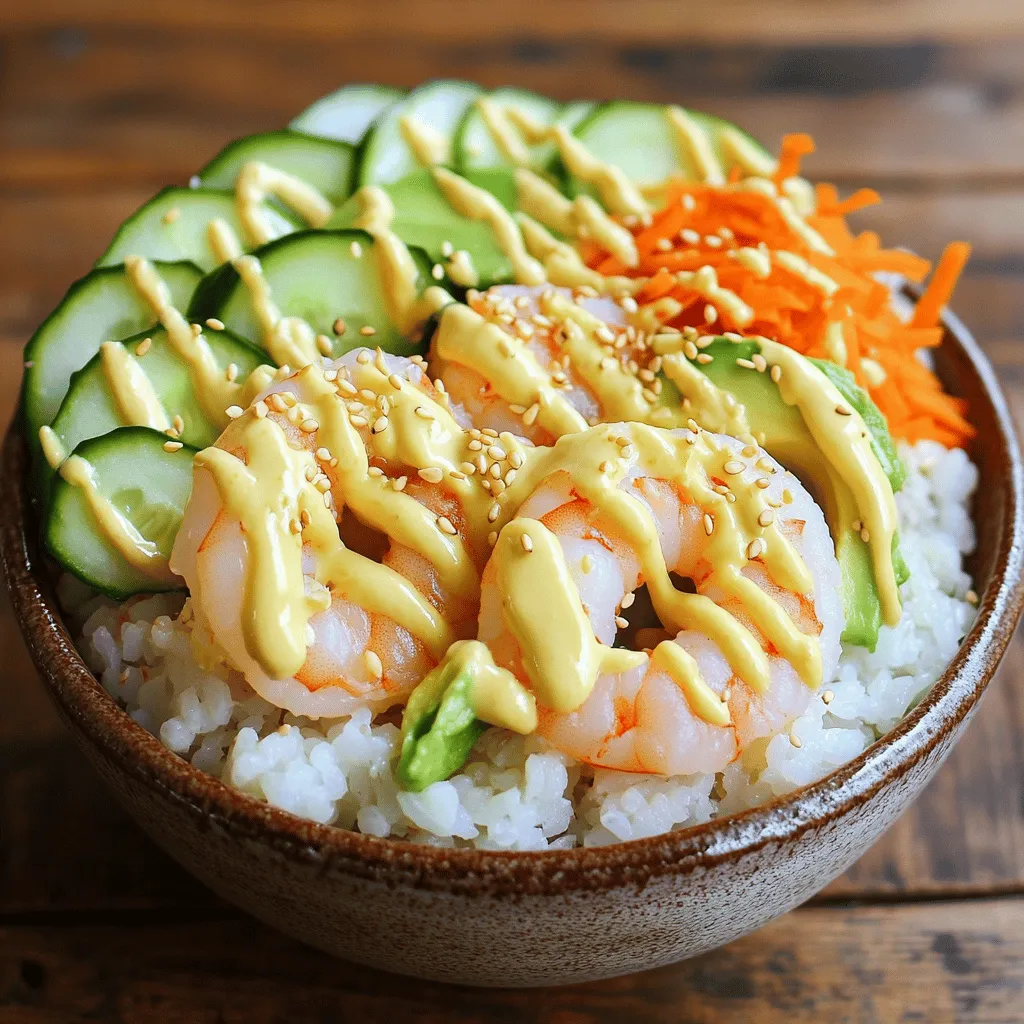
Yum Yum Sushi Bowl Flavorful and Fresh Recipe Guide
Are you ready to create a delicious Yum Yum Sushi Bowl? This fresh recipe guide will take you step-by-step through making this amazing dish. You’ll
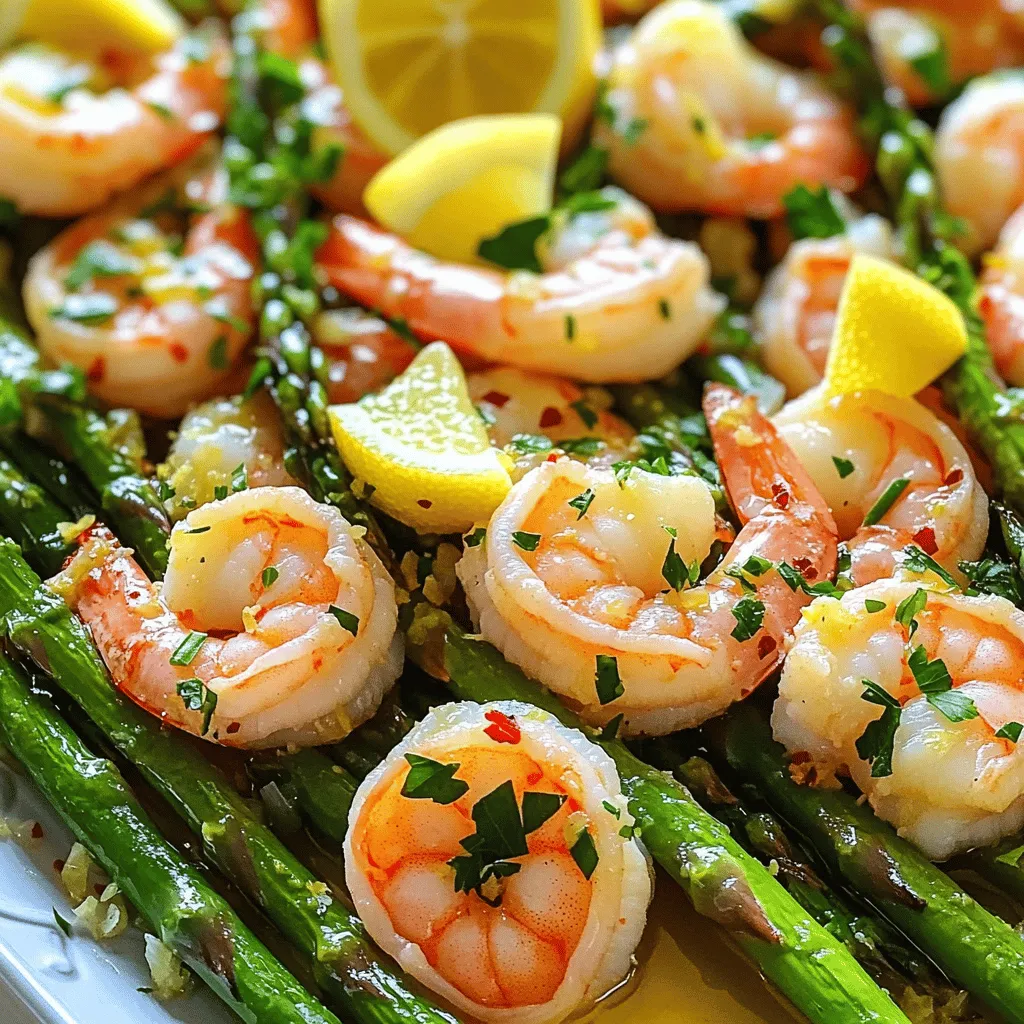
Lemon Garlic Shrimp and Asparagus Tasty Dinner Recipe
Looking for a quick and tasty dinner idea? In this Lemon Garlic Shrimp and Asparagus recipe, you’ll discover a dish that’s both easy and delicious.
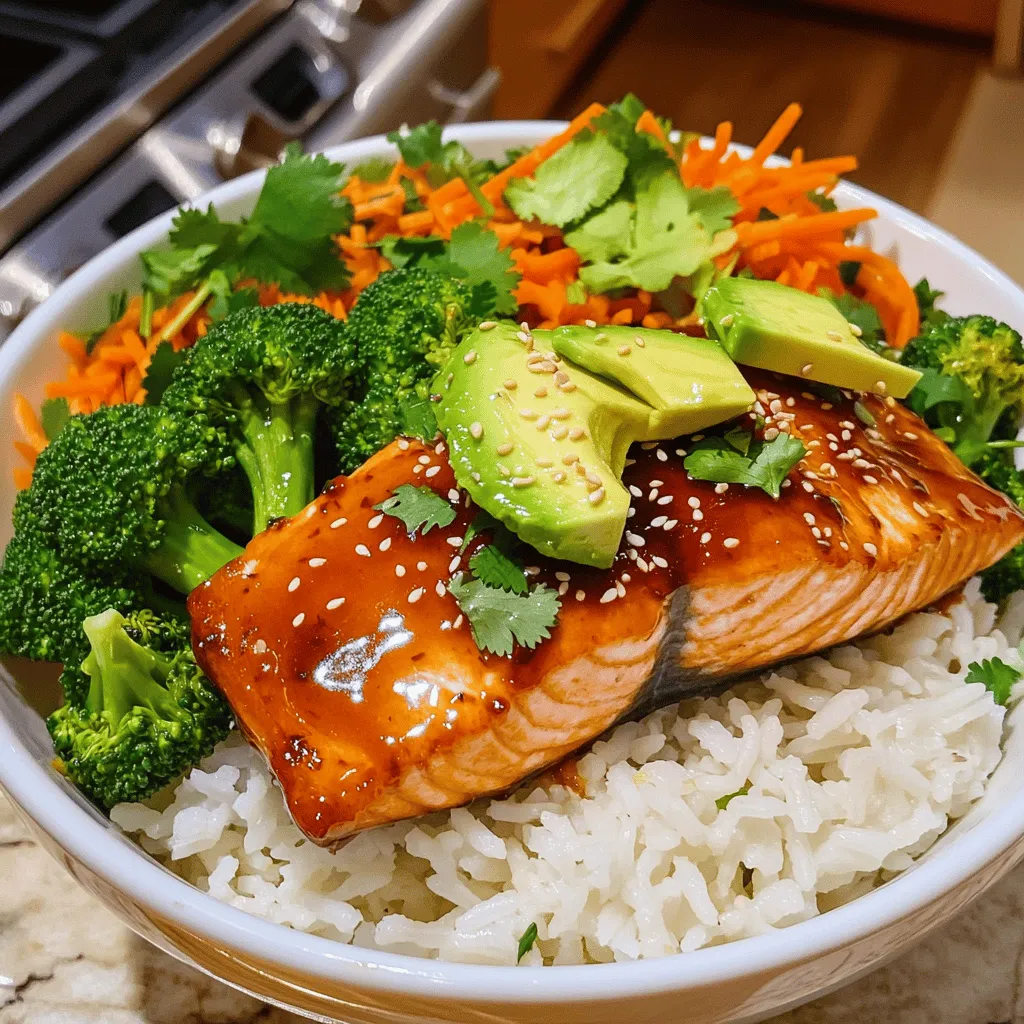
Honey Sriracha Salmon Bowls Flavorful and Easy Meal
Craving a quick and tasty meal? Honey Sriracha Salmon Bowls are just what you need! This dish blends sweet and spicy flavors, making it an
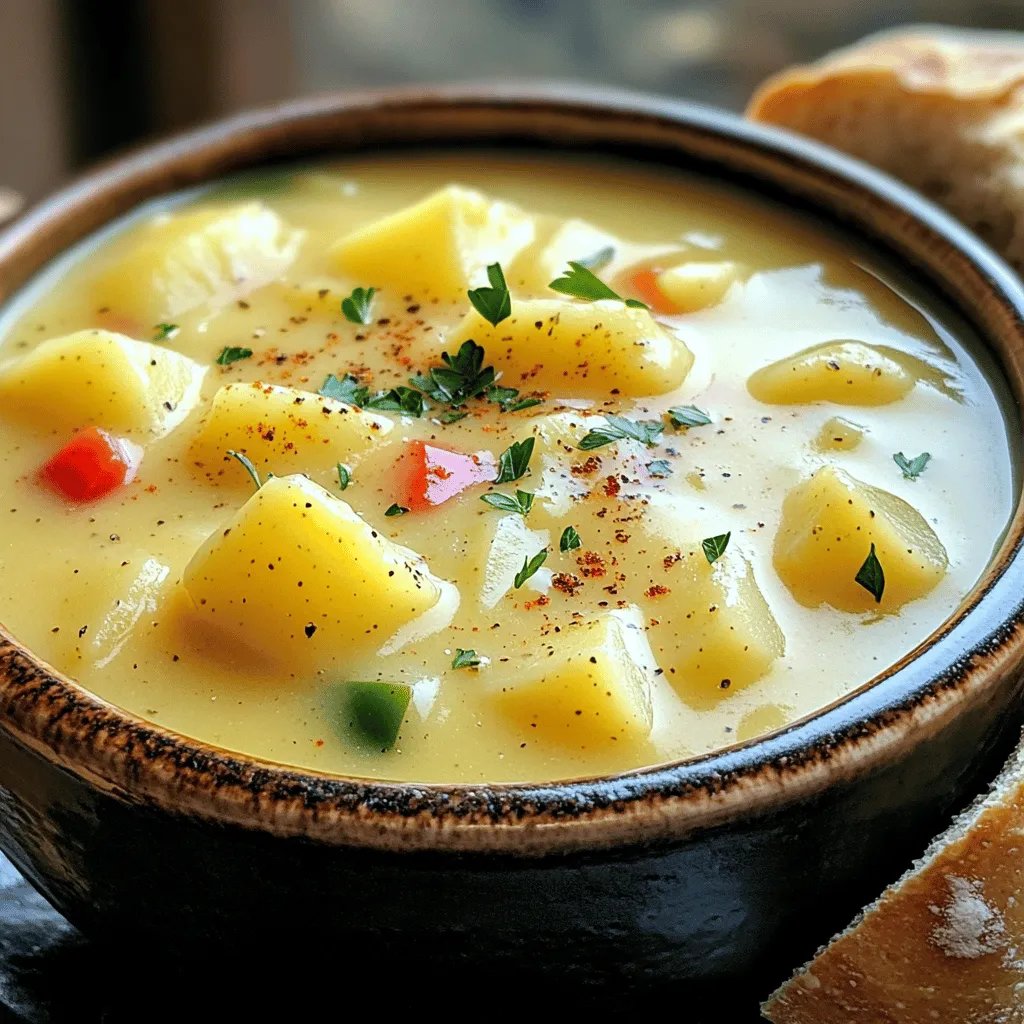
Cajun Potato Soup Hearty and Comforting Dish
Welcome to the world of Cajun Potato Soup, a dish that warms your heart and fills your belly! This hearty and comforting recipe is packed
![- 4 boneless, skinless chicken thighs - 1 cup fresh pineapple chunks - 1/2 cup packed brown sugar - 1/4 cup soy sauce - 2 tablespoons olive oil - 3 cloves garlic, minced - 1 teaspoon fresh ginger, finely grated - 1/2 teaspoon ground black pepper - 1/2 teaspoon salt - 2 green onions, finely chopped (for garnish) - Sesame seeds (for garnish) To make tasty Brown Sugar Pineapple Chicken, gather these simple ingredients. The chicken thighs stay juicy and tender. Fresh pineapple adds a sweet twist. Packed brown sugar gives it a rich flavor, while soy sauce adds a savory depth. For flavor, use olive oil to cook the chicken. Minced garlic and fresh ginger boost the taste even more. Season with ground black pepper and salt for balance. Finally, garnish with green onions and sesame seeds for a touch of crunch and color. Follow the [Full Recipe] to bring all these ingredients together. Enjoy making this delightful dish! - Prepare the marinade: In a medium bowl, mix the brown sugar, soy sauce, minced garlic, and grated ginger. Stir until the sugar mostly dissolves. This marinade packs in lots of flavor. - Marinate the chicken: Place the chicken thighs in a resealable bag or dish. Pour the marinade over the chicken. Make sure every piece is coated. Seal the bag or cover the dish. Let it sit in the fridge for at least 30 minutes. For more flavor, marinate for up to 2 hours. - Preheat the cooking surface: While the chicken marinates, preheat your grill or skillet over medium-high heat. Add olive oil, letting it heat until it shimmers. - Cook the chicken and pineapple: Remove the chicken from the marinade. Let excess liquid drip off and save the marinade for later. Place the chicken in the hot grill or skillet. Cook for about 5-7 minutes on each side until it reaches 165°F (75°C). The outside should look brown and caramelized. Add fresh pineapple chunks to the grill or skillet in the last few minutes. Cook until they caramelize, about 3-4 minutes. - Thicken the marinade: While the chicken cooks, pour the reserved marinade into a small saucepan. Bring it to a boil over medium heat, then lower to a simmer. Cook for about 5 minutes until it thickens slightly. - Garnish and serve: Once the chicken is done, drizzle the thickened marinade over the chicken and pineapple. Transfer to a serving platter. Top with chopped green onions and sesame seeds for a beautiful finish. This recipe makes a tasty and vibrant dish that looks as good as it tastes. For the full recipe, check out the details above. How long should you marinate chicken? For the best flavor, marinate the chicken for at least 30 minutes. If you have more time, go for 2 hours. This lets the chicken soak up all the tasty marinade. What are some marinating alternatives? You can mix in some lime juice or chili sauce for a fun twist. These options add a zesty kick to your chicken, making it even more delicious. Should you grill or use a skillet? Both methods work great! Grilling gives the chicken nice grill marks and a smoky flavor. Skillet cooking is faster and easier to control. Choose what fits your style. How can you check if the chicken is done? Use a meat thermometer to ensure it reaches 165°F (75°C). This guarantees the chicken is safe to eat and juicy. What side dishes go well with this chicken? Steamed white rice or fluffy quinoa are perfect. They soak up the yummy sauce. You can also serve a fresh salad for a light touch. How can you present the dish? Arrange the chicken and caramelized pineapple on a large plate. Garnish with chopped green onions and sesame seeds for color. It makes the dish look as good as it tastes! {{image_4}} You can change things up with different fruits. Try mango or peach for a sweet twist. You can also use canned pineapple if fresh ones are hard to find. If you want to swap chicken, turkey breasts or firm tofu work well. Each swap can create a new flavor. You can bake this dish for a hands-off approach. Preheat your oven to 375°F (190°C). Place the marinated chicken and pineapple in a baking dish. Bake for about 30 minutes, or until the chicken is cooked through. Another option is a slow cooker. Add the chicken, pineapple, and marinade to the slow cooker. Cook on low for 4-6 hours. This method makes the chicken tender and fills your kitchen with great smells. Feel free to add spices for more depth. A pinch of cayenne or paprika can bring a nice kick. You can also mix in some soy sauce for a more savory note. Try adding a tablespoon of honey for extra sweetness. This dish works well with both sweet and savory flavors, so experiment to find your favorite combo. For more tips, check the Full Recipe. To store leftovers, place the chicken and pineapple in an airtight container. This keeps the dish fresh and tasty. You can store it in the fridge for up to three days. After that, the flavor may fade. Always let the dish cool before sealing it for storage. This helps keep the texture and moisture intact. For freezing, wrap the chicken and marinade in plastic wrap or foil. You can also use a freezer bag. Make sure to remove as much air as possible. This helps prevent freezer burn. The chicken can last up to three months in the freezer. When you're ready to use it, thaw the chicken in the fridge overnight. This keeps it safe and maintains its flavor. To reheat the chicken, use an oven or stovetop for best results. Avoid the microwave, as it may dry out the meat. Preheat your oven to 350°F (175°C) and place the chicken in a baking dish. Heat until the internal temperature reaches 165°F (75°C). This ensures it's warm and juicy. If you want extra moisture, add a splash of water or broth before covering the dish with foil. To make Brown Sugar Pineapple Chicken, follow these simple steps: 1. Mix Marinade: In a bowl, combine brown sugar, soy sauce, garlic, ginger, black pepper, and salt. 2. Marinate Chicken: Put chicken thighs in a bag or dish. Pour marinade over chicken and let it soak. 3. Heat Your Pan: Preheat a skillet with olive oil over medium-high heat. 4. Cook Chicken: Remove chicken from marinade. Cook for 5-7 minutes on each side until done. 5. Thicken Marinade: In a saucepan, boil reserved marinade, then simmer until thick. 6. Add Pineapple: Add pineapple chunks in the last few minutes of cooking. 7. Serve: Drizzle thickened sauce over chicken and pineapple. Garnish with green onions and sesame seeds. Yes, you can use canned pineapple. Here are the pros and cons: - Pros: Canned pineapple is convenient and saves time. It also has a long shelf life. - Cons: Canned pineapple can be softer and less sweet than fresh. It may not caramelize as well when cooked. For best results, drain canned pineapple to reduce excess moisture. Brown Sugar Pineapple Chicken is a tasty dish with a good balance of nutrients. Here is an overview of calories and macros per serving: - Calories: About 350-400 calories - Protein: Around 28 grams - Carbohydrates: Roughly 30 grams - Fat: Approximately 15 grams This dish offers protein and some healthy fats, along with a burst of flavor from the pineapple. Enjoy it with rice or quinoa for a balanced meal! In this article, we explored the tasty Brown Sugar Pineapple Chicken. We discussed main ingredients like chicken thighs, pineapple, and soy sauce. The step-by-step instructions help you prepare and cook the dish just right. We also shared tips on marinating, cooking methods, and serving ideas. You learned about variations and storage, too. This dish is simple and full of flavor. Enjoy making it your own with different ingredients and methods. Cooking should be fun and satisfying, so get creative and dig in!](https://roastedflavors.com/wp-content/uploads/2025/05/18ad6a06-8495-4b1f-8ac1-42fda288f4ee.webp)
Brown Sugar Pineapple Chicken Flavorful and Easy Recipe
Craving a dish that’s both sweet and savory? Brown Sugar Pineapple Chicken is your answer! This flavorful and easy recipe combines tender chicken thighs with

Satisfying Chicken Avocado Ranch Burritos Recipe
Looking for a tasty meal that’s easy to make? These Chicken Avocado Ranch Burritos are just what you need! Packed with flavor and fresh ingredients,
![To make these Garlic Butter Honey BBQ Beef Tacos, you will need some key ingredients. Here’s what you need: - 1 lb ground beef - 3 tablespoons unsalted butter - 4 cloves garlic, minced - 1/4 cup honey - 1/4 cup BBQ sauce (your favorite brand) - 1 teaspoon smoked paprika - 1 teaspoon ground cumin - 1/2 teaspoon chili powder - Salt and freshly ground black pepper to taste - 8 small corn or flour tortillas - 1 cup shredded lettuce - 1 cup diced tomatoes - 1 cup shredded cheese (cheddar or Mexican blend preferred) - Fresh cilantro sprigs, for garnish - Lime wedges, for serving These ingredients create a rich and sweet flavor in your tacos. The ground beef gives protein, while the garlic and butter add depth. Honey and BBQ sauce bring sweetness and tang. Don’t forget the spices! They add warmth and character to the dish. Use fresh toppings to add crunch and color. Shredded lettuce, tomatoes, and cheese make the tacos pop. Cilantro gives a fresh finish, while lime adds a zesty kick. For the full recipe, check out the [Full Recipe]. Enjoy cooking! 1. Start by melting the unsalted butter in a large skillet over medium heat. Once it melts, add the minced garlic. Sauté the garlic for 1-2 minutes. Watch it closely so it doesn't brown. You want the garlic to release its lovely aroma. 2. Next, add the ground beef to the skillet. Break it apart with a spatula. Cook it for about 5-7 minutes. You want it fully browned and crumbly. Drain any extra grease. This keeps your tacos from being too oily. 3. Now, it's time to add some flavor! Stir in the honey and BBQ sauce. Then, add the smoked paprika, cumin, chili powder, and season with salt and black pepper. Mix everything well. Let it simmer on low heat for 5-10 minutes. This allows the flavors to blend nicely. 4. While the beef mixture simmers, warm the tortillas in a separate dry skillet. Heat them for about 30 seconds on each side. This step makes them warm and pliable. It helps when you assemble the tacos. 5. To put the tacos together, take a warm tortilla. Scoop a generous amount of the BBQ beef mixture into the center. Top each taco with shredded lettuce, diced tomatoes, and a sprinkle of cheese. 6. For the final touch, garnish with fresh cilantro. Serve with lime wedges on the side. This adds a zesty kick. Your Garlic Butter Honey BBQ Beef Tacos are now ready to enjoy! For the full recipe, check the details above. How to achieve perfectly browned beef To get perfectly browned beef, start with a hot skillet. Use medium heat and let the pan warm up. Add the ground beef, breaking it into small pieces. This helps it brown evenly. Cook without stirring too much. Let it sit for a minute, then stir. This gives the beef a nice crust. Drain any excess grease after cooking. This keeps your tacos from being too oily. Best practices for sautéing garlic Sautéing garlic is simple but needs care. First, melt the butter over medium heat. Once the butter is bubbly, add the minced garlic. Stir it for just 1-2 minutes. Watch closely so it doesn’t brown. Brown garlic can taste bitter. You want it fragrant and soft. This step adds a rich flavor to your beef. Arranging tacos on a platter For a great look, use a colorful platter. Place each taco neatly side by side. This makes the dish inviting. You can also stack them slightly for a fun effect. Adding lime wedges around the tacos boosts color and freshness. It makes your meal more appealing. Using lime wedges for garnish Lime wedges are not just for looks. They add a zesty kick to your tacos. Squeeze the lime over the taco just before eating. This brightens the flavors and enhances the taste. It’s a simple trick that takes your dish to the next level! For the full recipe, check out the detailed steps provided earlier. {{image_4}} You can swap out the ground beef if needed. Ground turkey, chicken, or even lentils work well. Each option adds its own flavor. For BBQ sauce, don’t feel limited to one type. Sweet, spicy, or smoky sauces can change the taste. Try a mustard-based sauce for a unique twist. Make it your own! If you want to keep it light, use lettuce wraps instead of tortillas. They are crunchy and fresh. Simply fill the lettuce leaves with the beef mixture and toppings. For a heartier option, create burrito-style tacos. Use larger tortillas and add more beef and toppings. Fold them tightly, and you have a filling meal. Enjoy customizing your tacos! To keep your leftover beef mixture fresh, first let it cool to room temperature. Then, place it in an airtight container. Refrigerate the container for up to three days. If you want to keep it longer, you can freeze the beef mixture. Just make sure to use a freezer-safe container. It can last for up to three months in the freezer. When it comes to storing assembled tacos, it’s best to keep them separate. If you store them together, the tortillas will get soggy. Instead, wrap each taco in foil or plastic wrap. Then, place them in the fridge. Use them within two days for the best taste. To reheat the beef, use a skillet over medium heat. Stir the beef often until it is heated through. This method keeps the meat juicy and flavorful. You can also microwave it in a bowl. Just cover it with a damp paper towel to keep it moist. For the tortillas, you want to keep them fresh too. Heat them in a dry skillet for about 30 seconds on each side. You can also wrap them in a damp paper towel and microwave them for about 20 seconds. This keeps them soft and easy to fold. Enjoy your meal made from the Full Recipe! Yes, you can make the beef mixture ahead of time. Cook it and let it cool. Store it in an airtight container in the fridge for up to three days. When you're ready to serve, just reheat it in a skillet. This makes dinner quick and easy. The best toppings are fresh and bright. I love to use: - Shredded lettuce - Diced tomatoes - Shredded cheese (cheddar or Mexican blend) - Fresh cilantro sprigs - Lime wedges These toppings add crunch and flavor to your tacos. To make it less spicy, skip the chili powder. You can also use mild BBQ sauce. Adding more honey will balance the heat too. Always taste as you go to find your perfect blend. This blog post covered all you need for tasty garlic butter honey BBQ beef tacos. You learned about the key ingredients, step-by-step cooking, and clever tips for serving. We discussed variations, storage methods, and answered common questions. Now you can create delicious tacos that impress your friends and family. Enjoy experimenting with flavors and make this dish your own! The joy of cooking is in trying new things, so have fun with it!](https://roastedflavors.com/wp-content/uploads/2025/05/ddd61656-3a65-4e06-ab93-3560d6c9bb0e.webp)
Garlic Butter Honey BBQ Beef Tacos Delicious Meal
Craving a tasty twist on taco night? Try my Garlic Butter Honey BBQ Beef Tacos! This easy recipe combines succulent beef with rich garlic butter
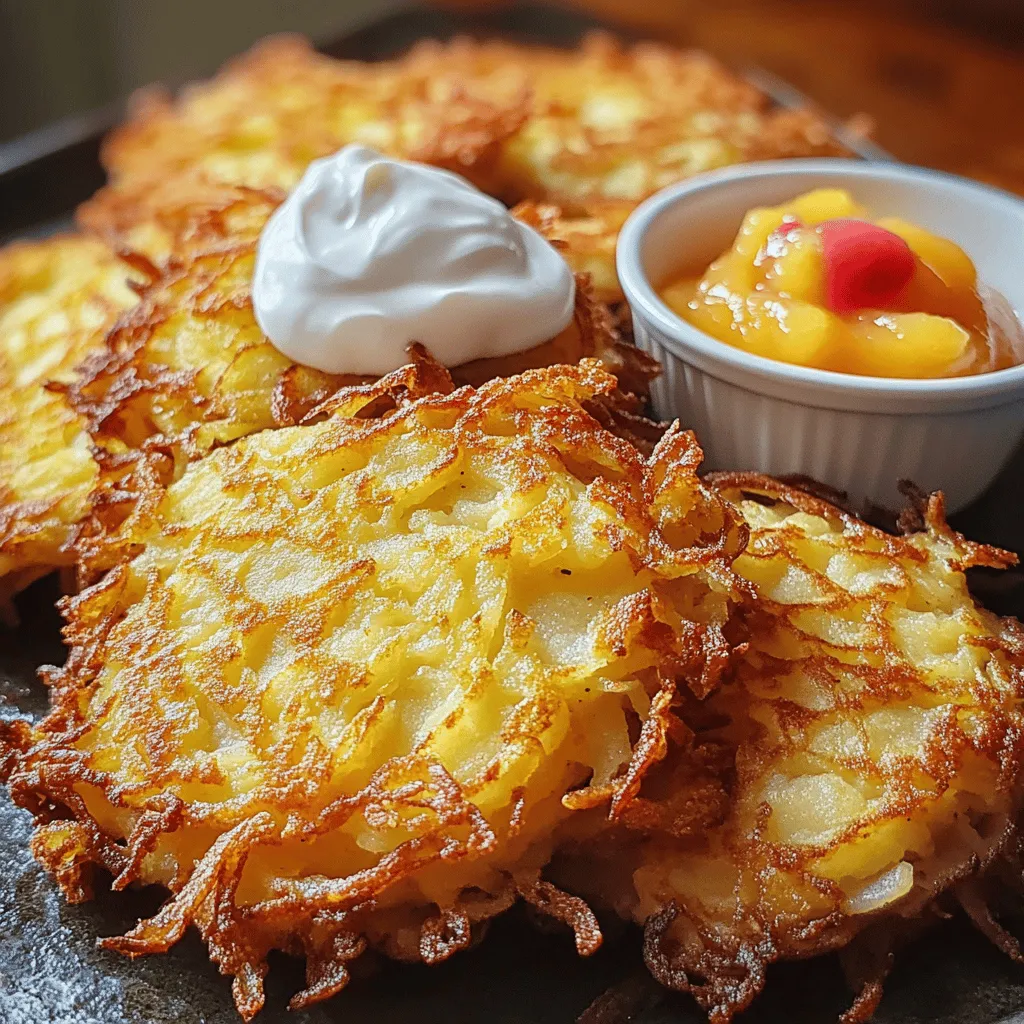
German Potato Pancakes Crispy and Flavorful Recipe
Discover the delicious world of German potato pancakes with my tasty, crispy recipe! These golden brown treats, known as Kartoffelpuffer, are easy to make and
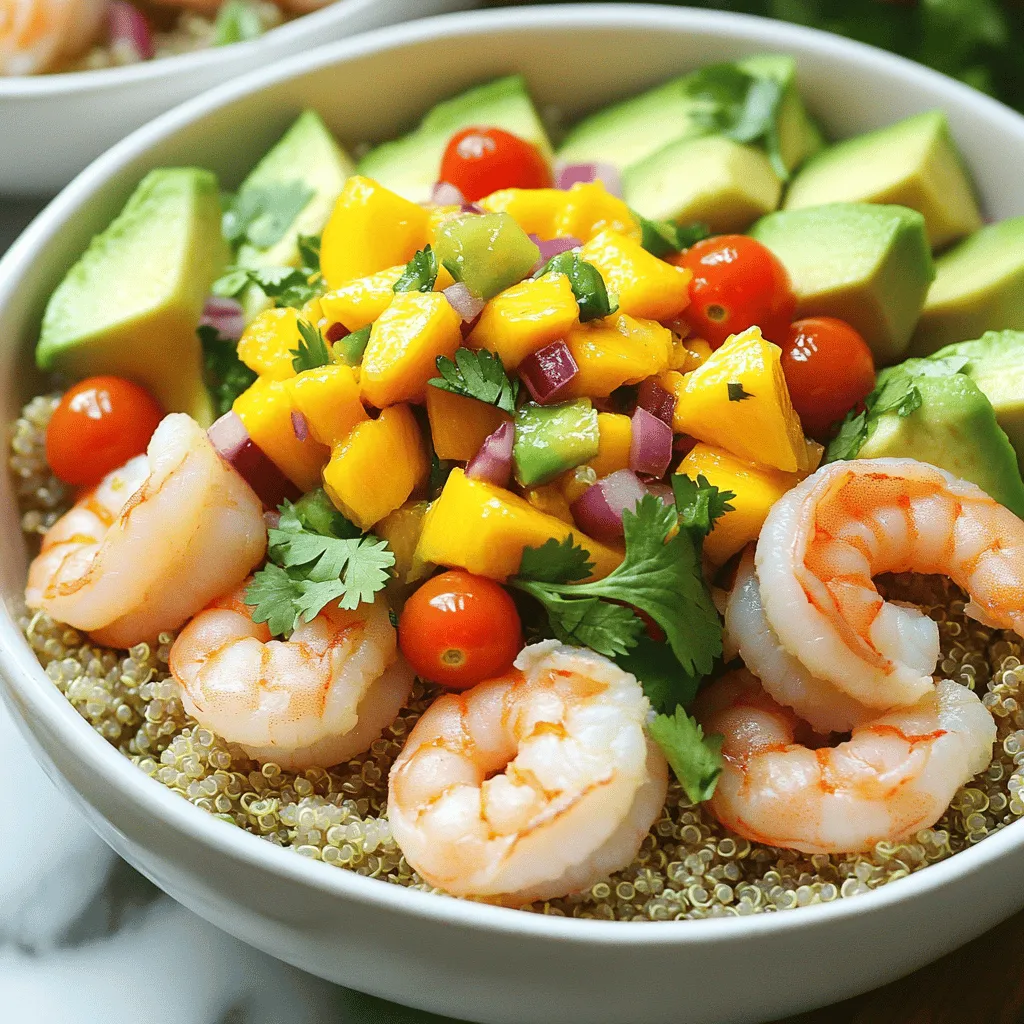
Shrimp and Avocado Bowls with Mango Salsa Delight
Are you ready to enjoy a burst of fresh flavors? My Shrimp and Avocado Bowls with Mango Salsa Delight are all about bright, delicious ingredients
![Cooking our Hawaiian Chicken Sheet Pan is easy with the right ingredients. Here’s what you need: - 4 boneless, skinless chicken thighs - 1 cup fresh pineapple, diced - 1 red bell pepper, sliced into strips - 1 yellow bell pepper, sliced into strips - 1 red onion, cut into wedges - 3 cloves garlic, minced - 3 tablespoons soy sauce (or tamari for a gluten-free option) - 2 tablespoons honey - 1 tablespoon fresh ginger, grated - 1 tablespoon sesame oil - Salt and freshly ground black pepper, to taste - Fresh cilantro, chopped, for garnish Each ingredient plays a big role in creating flavor. Chicken thighs give a juicy and tender bite. The fresh pineapple adds sweetness and tang. The bell peppers and onion bring color and crunch. The marinade blends soy sauce, honey, ginger, and garlic for a bright taste. Use fresh ingredients for the best results. This is key to making your dish shine. For the full recipe, check the details above. Enjoy the cooking process! Marinating the chicken Start by preheating your oven to 400°F (200°C). Grab a large mixing bowl. In it, whisk together soy sauce, honey, minced garlic, grated ginger, and sesame oil. Add a pinch of salt and black pepper to taste. Place the chicken thighs into the bowl and coat them well. Let the chicken marinate for about 15 minutes. This step boosts the flavor and makes the chicken juicy. Preparing the vegetables While the chicken marinates, wash and chop your vegetables. In another bowl, mix diced pineapple, red and yellow bell peppers, and red onion. Drizzle a bit of olive oil over the veggies. Season with salt and pepper, then toss until they are all coated. This will add a nice sweetness and crunch to your dish. Baking the dish Line a large sheet pan with parchment paper for easy cleanup. Arrange the marinated chicken thighs on one side of the pan. On the other side, spread the vegetable and pineapple mix evenly. Place the sheet pan in your preheated oven. Bake for 25 to 30 minutes. You want the chicken to reach an internal temperature of 165°F (75°C) and the veggies to be tender. After baking, let the pan rest for a few minutes. This allows the juices to soak back into the chicken. For a fresh touch, garnish with chopped cilantro before serving. Enjoy this tropical delight! You can find the Full Recipe for more details. For great flavor, marinate your chicken thighs. Use a bowl to mix soy sauce, honey, garlic, ginger, and sesame oil. This blend creates a tasty marinade. - Let the chicken soak for at least 15 minutes. For more flavor, try marinating longer, up to 2 hours if you can. - Always keep the chicken covered in the fridge while marinating. This helps keep it safe and fresh. If you want to add more flavor, try these ideas: - Citrus Twist: Add the juice of a lime or orange to the marinade. This adds a zesty flavor. - Heat It Up: Add a pinch of red pepper flakes for a spicy kick. Getting the chicken cooked right is key. Use a meat thermometer to check the chicken's temperature. It should reach 165°F (75°C) for safety. - Place the chicken on one side of the sheet pan. Give it space so it cooks evenly. - Bake for 25-30 minutes. Check the chicken after 20 minutes to ensure it isn’t overcooking. To caramelize your vegetables: - Cut them into equal sizes for even cooking. - Drizzle with olive oil and sprinkle with salt and pepper before baking. This helps them brown nicely. - Keep an eye on them during the last few minutes. They should be tender and lightly browned. Using these tips will help you create a delicious Hawaiian Chicken Sheet Pan that shines with flavor. Enjoy your cooking! For the full recipe, check out [Full Recipe]. {{image_4}} You can change the protein in this dish. Try tofu or shrimp for a fun twist. Both options soak up the marinade well. They add a unique taste and texture. For vegetables, feel free to mix and match. Use zucchini, broccoli, or snap peas instead. These options add color and crunch. You can even add carrots or mushrooms for more flavor. Each choice brings its own taste to the meal. Be creative! Adjusting the marinade opens new flavor doors. If you want a spicy kick, add red pepper flakes or chili sauce. This gives the dish a nice heat. For a sweeter touch, try brown sugar instead of honey. You can also mix in fresh herbs. Basil or mint can brighten the dish. Toss in some lime zest for a citrus boost. Each change can make a big difference. Enjoy experimenting with your flavors! To keep your Hawaiian chicken fresh, store leftovers in the fridge. Use an airtight container. This helps seal in moisture and flavor. You can keep the chicken for up to three days. For longer storage, consider freezing. Just let the dish cool before packing it away. Use freezer-safe bags or containers. Label them with the date. You can freeze it for up to three months. You can easily reheat your Hawaiian chicken in the oven or microwave. To reheat in the oven, set it to 350°F (175°C). Place the chicken in a baking dish, cover it with foil, and heat for about 15-20 minutes. This helps keep the chicken moist. If using a microwave, place the chicken on a microwave-safe plate. Cover it loosely and heat in short bursts. Check every 30 seconds until warm. For best results, try to maintain the texture and flavor. Avoid overheating, as this can dry it out. A splash of water or broth can help keep it juicy. Enjoy your meal just like the first time! Yes, you can use chicken breasts instead of thighs. Chicken breasts are leaner and may cook faster. Adjust your cooking time to ensure they reach 165°F. Check them a bit earlier than thighs to avoid dryness. You can serve Hawaiian chicken with rice or quinoa. These grains soak up the tasty sauce. You might also enjoy it with a fresh green salad or coleslaw for crunch. Grilled veggies make a great side, too. You can marinate the chicken for 15 to 30 minutes. This time gives the chicken great flavor. If you want even more depth, you can marinate it up to 2 hours in the fridge. Avoid marinating too long to keep the chicken tender. For the full recipe, check out the Tropical Hawaiian Chicken Sheet Pan. In this article, you learned how to prepare a delicious dish with chicken thighs and vegetables. We covered the marinating process, cooking tips, and storage ideas. You can also explore ingredient swaps and flavor variations to keep meals exciting. Remember, cooking is about experimenting and having fun. Use these tips to create your version of this dish. Enjoy every bite, and don’t hesitate to make it your own!](https://roastedflavors.com/wp-content/uploads/2025/05/d03d5909-556a-421a-aada-5768bf54f199.webp)
Hawaiian Chicken Sheet Pan Delightful Easy Recipe
Looking for a quick and tasty meal? My Hawaiian Chicken Sheet Pan recipe is here to save your dinner time! You’ll love how easy it